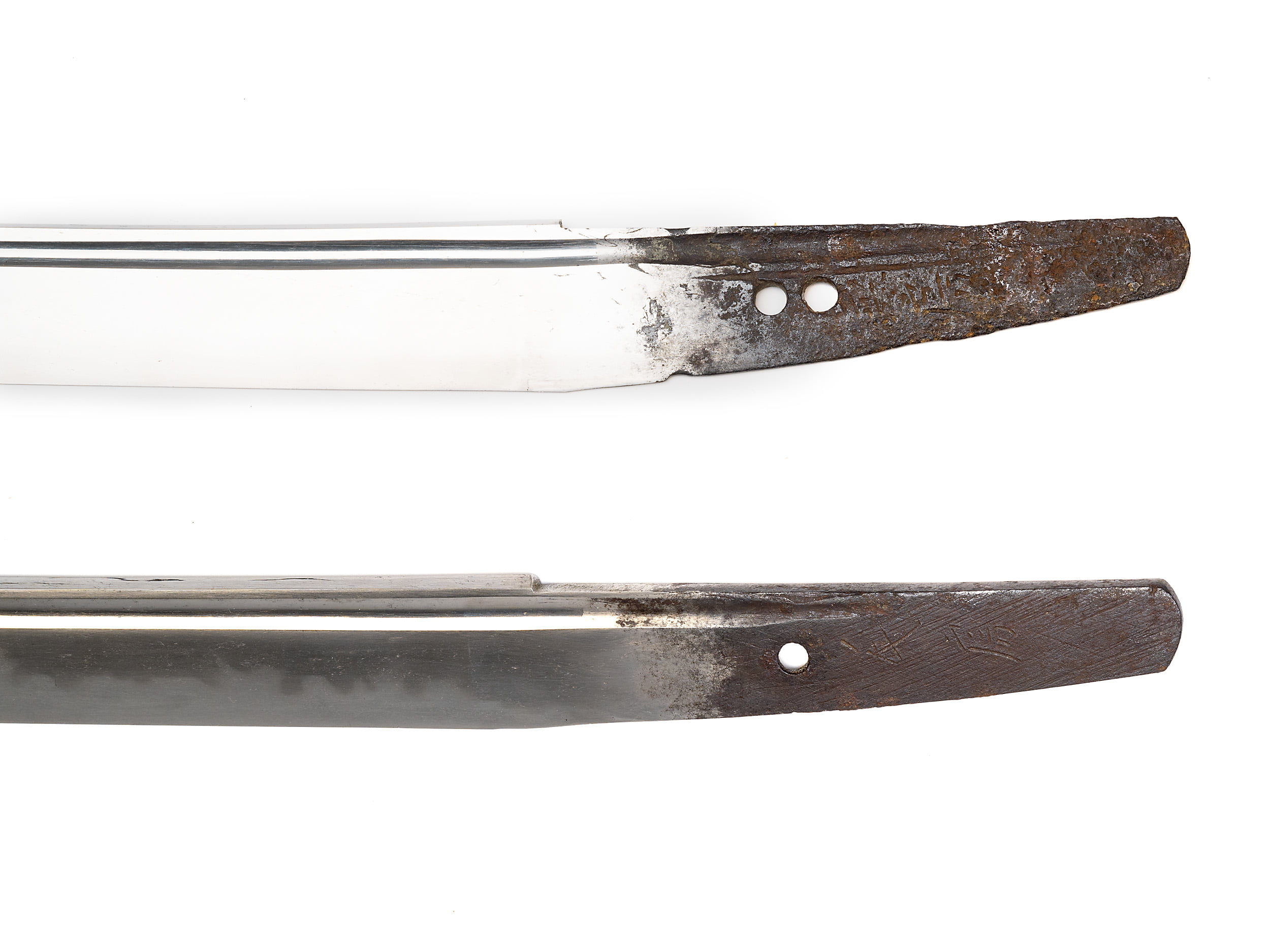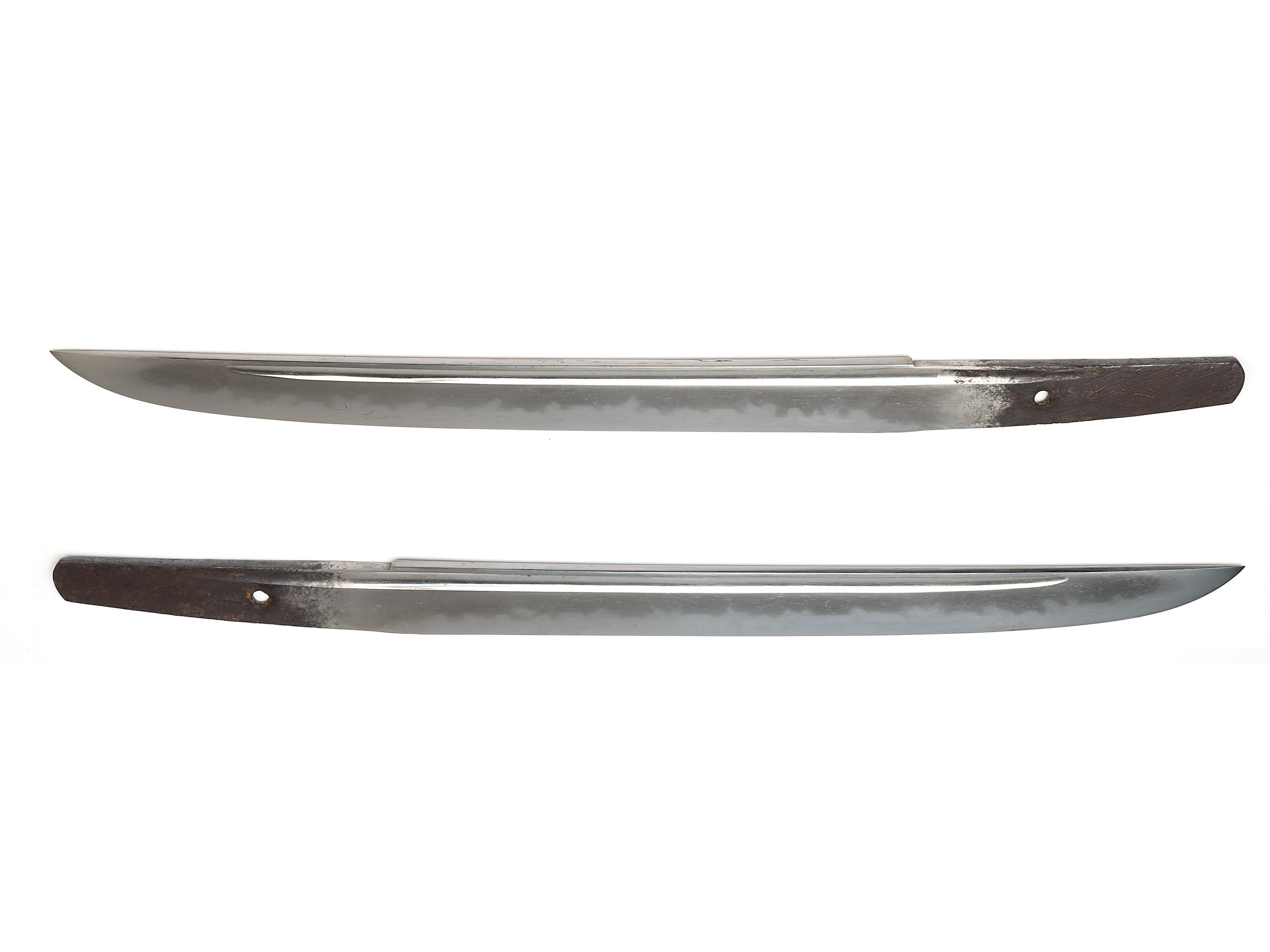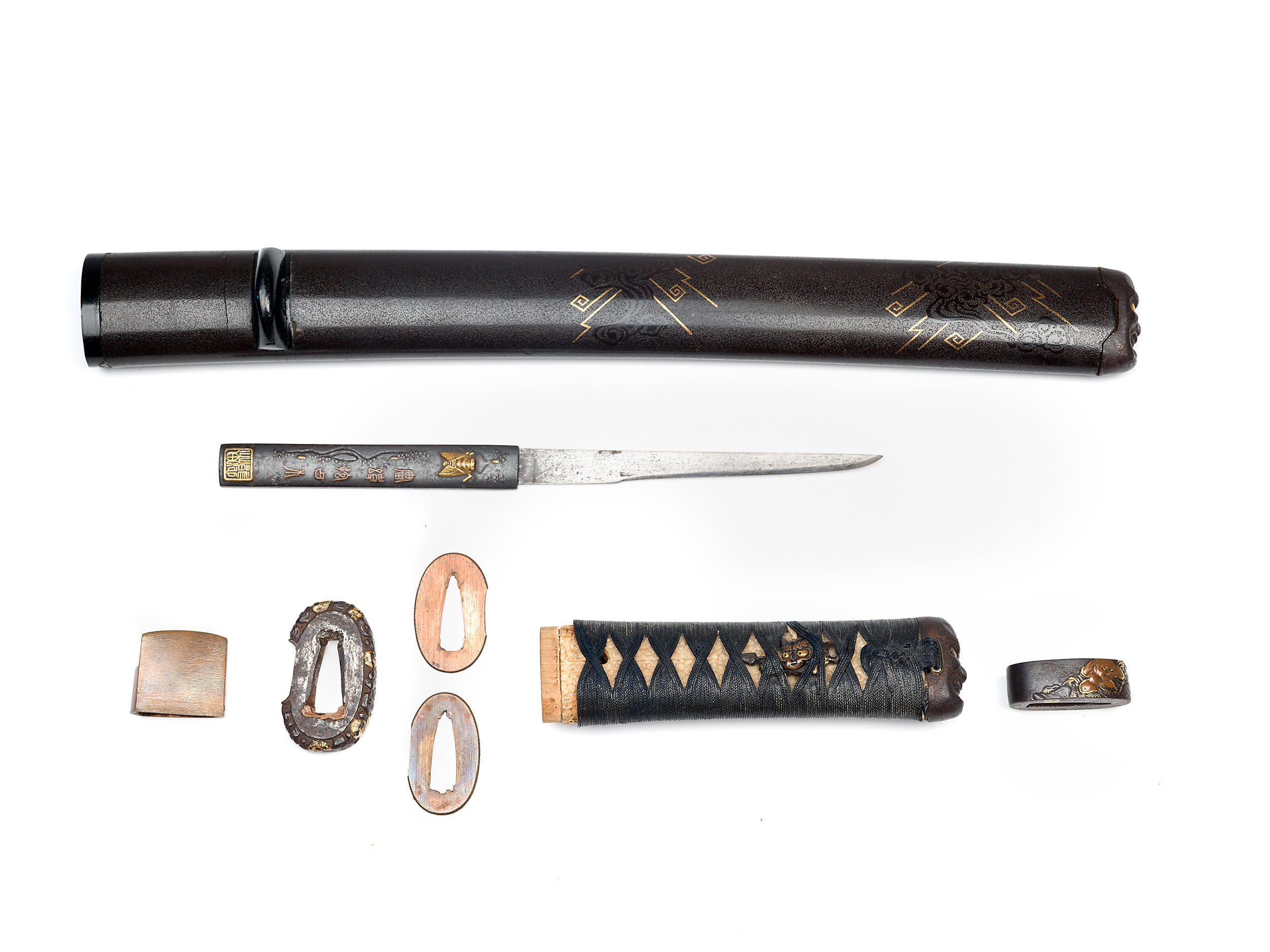A tanto blade signed Ujifusa (of Mino), late 16th century. Hirazukuri, ihorimune and almost musori with grooves each side, itame-mokume hada and pointed gonome hamon with claws, komaru boshi and ubu nakago with one mekugi-ana, 28.2cm long.
With a beautiful kuro-ishimejinuri stone pattern lacquer saya decorated with thunder-clouds and lighting flashes, the iron kojiri and kashira formed as masks, with gilt detail, with an iron cicada and pine kozuka, soft-metal mask menuki and iron fushi inscribed Joi and iron hamidashi tsuba carved with clouds.
Born in 1534, Ujifusa, son of a Mino swordsmith (Seki Kanefusa), initially signed his work as “Kanefusa.” In 1570, a powerful lord, Imagawa Ujizane, recruited Ujifusa to craft swords for the Imagawa clan. Ujizane even granted Ujifusa the title “Wakasanokami” and part of his own name, “Uji.” Following the defeat of the Imagawa clan by Oda Nobunaga at the Battle of Okehazama in 1560, Ujifusa then began working for Oda Nobunaga, known as one of the three great unifiers of Japan. Throughout the war-torn Sengoku period, Ujifusa moved around, forging blades and even crafting swords for Nobunaga’s son, Nobutaka, in Owari Kiyosu (present-day Aichi).
Provenance:
Christie’s, London, June 1988
Private collection, Switzerland



Kunstberatung Zürich AG
Börsenstrasse 27 8001 Zürich Switzerland
VAT Number: CHE-113.608.140
+41 44 381 50 40
contact@kunstberatung-zurich.com
©2025 Kunstberatung Zürich AG No part of this website may be reproduced, distributed, stored in a retrieval system or transmitted in any form or by any means, electronic, mechanical, or otherwise, without the prior permission of Kunstberatung Zürich AG.